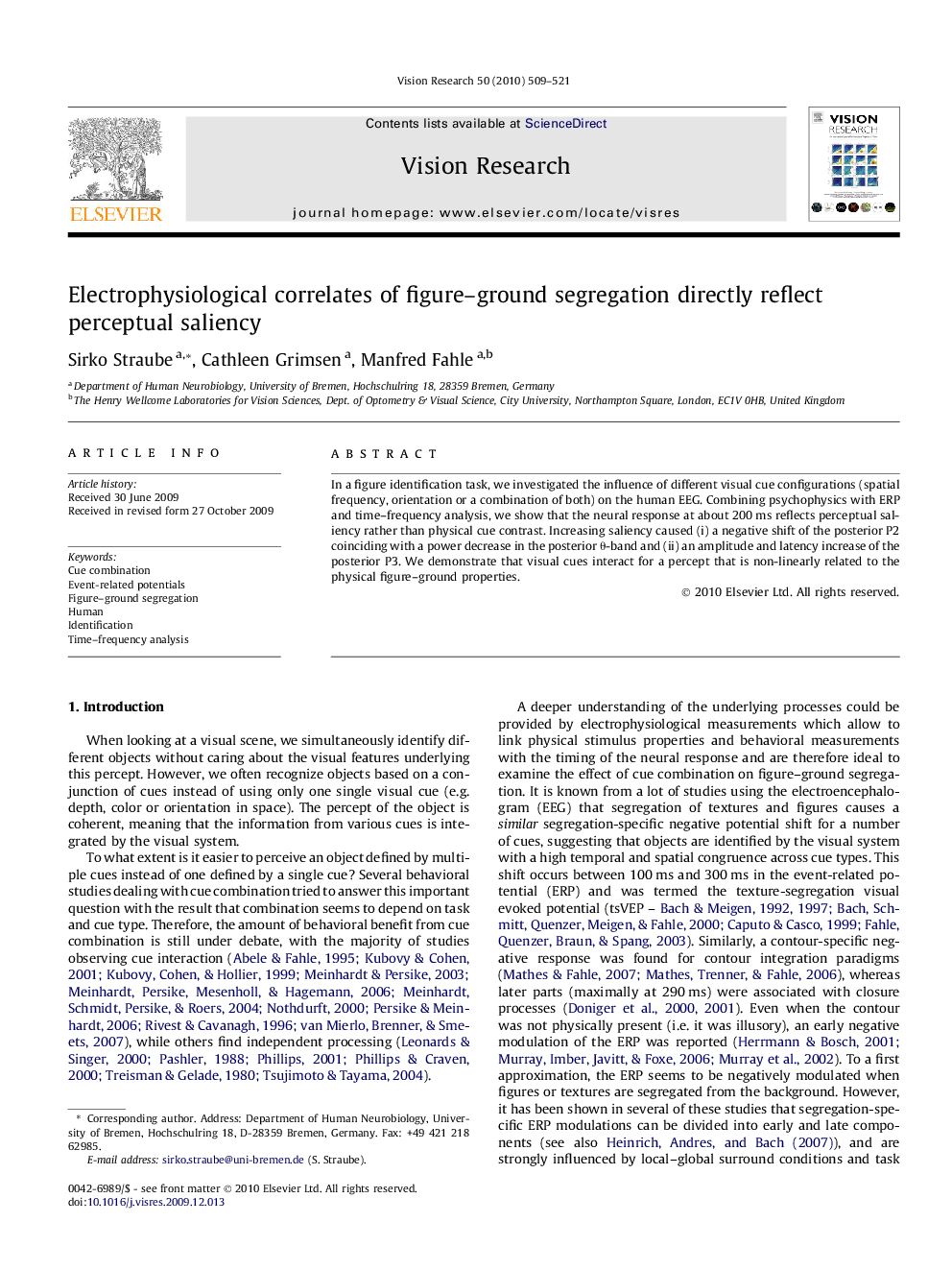| Article ID | Journal | Published Year | Pages | File Type |
|---|---|---|---|---|
| 4034510 | Vision Research | 2010 | 13 Pages |
Abstract
In a figure identification task, we investigated the influence of different visual cue configurations (spatial frequency, orientation or a combination of both) on the human EEG. Combining psychophysics with ERP and time–frequency analysis, we show that the neural response at about 200 ms reflects perceptual saliency rather than physical cue contrast. Increasing saliency caused (i) a negative shift of the posterior P2 coinciding with a power decrease in the posterior θ-band and (ii) an amplitude and latency increase of the posterior P3. We demonstrate that visual cues interact for a percept that is non-linearly related to the physical figure–ground properties.
Keywords
Related Topics
Life Sciences
Neuroscience
Sensory Systems
Authors
Sirko Straube, Cathleen Grimsen, Manfred Fahle,
